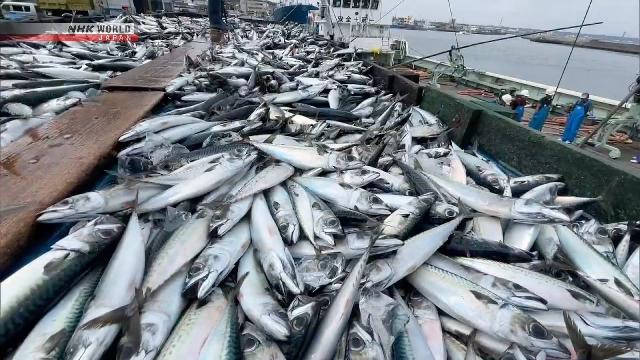Marked changes of fish species and catches have been reported across Japan’s fisheries following major alterations in the Kuroshio Current off the Pacific coast.
Japan’s Fisheries Agency says the Kuroshio Current returned to its normal course this year, no longer flowing northward along the coast of northeastern Japan. The agency says the current now turns eastward off the Boso Peninsula, as it typically does.
This year has also seen the end of a large meander in the current that had continued for over seven years off the southern coasts of the Shikoku and Honshu islands.
At Choshi Fishing Port in Chiba Prefecture near Tokyo, autumn mackerel catches have recovered to previous levels.
The fisheries agency says the restoration of the Kuroshio’s usual path may have allowed the mackerel to ride the southward-flowing current and reach fishing grounds off Choshi.
As of Monday, the amount of fish landed by purse-seine boats at Choshi Port this month exceeded 1,100 tons.
This is nearly four and a half times the roughly 247 tons landed in October last year.
On Monday, nearly 500 tons of mackerel caught off Choshi were unloaded, filling trucks to capacity.
An employee of the fishing vessel company said almost no mackerel were caught last year.
He said that at this time of year, ships would usually have to go farther north, near Ishinomaki or Hachinohe, for mackerel, but this year the fish are being caught near Choshi.
He added that the shift in the current may be a factor and expressed hope that the plentiful mackerel haul would continue.
Choshi Port has also seen a surge in sardine catches, which were poor last year. The haul from June to September reached more than 70,000 tons. This is 21 times as much as the 3,390 tons in the same period last year.
Researcher Kakehi Shigeho of the Japan Fisheries Research and Education Agency says changes in the current’s path may be allowing fish to return to the habitats they occupied seven years ago.
Kakehi added that because global warming has caused an overall rise in sea temperatures, a return of currents to their original state does not necessarily mean that the entire marine environment will revert to its former state.
He said the situation must continue to be monitored.
